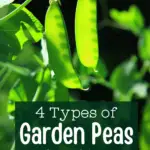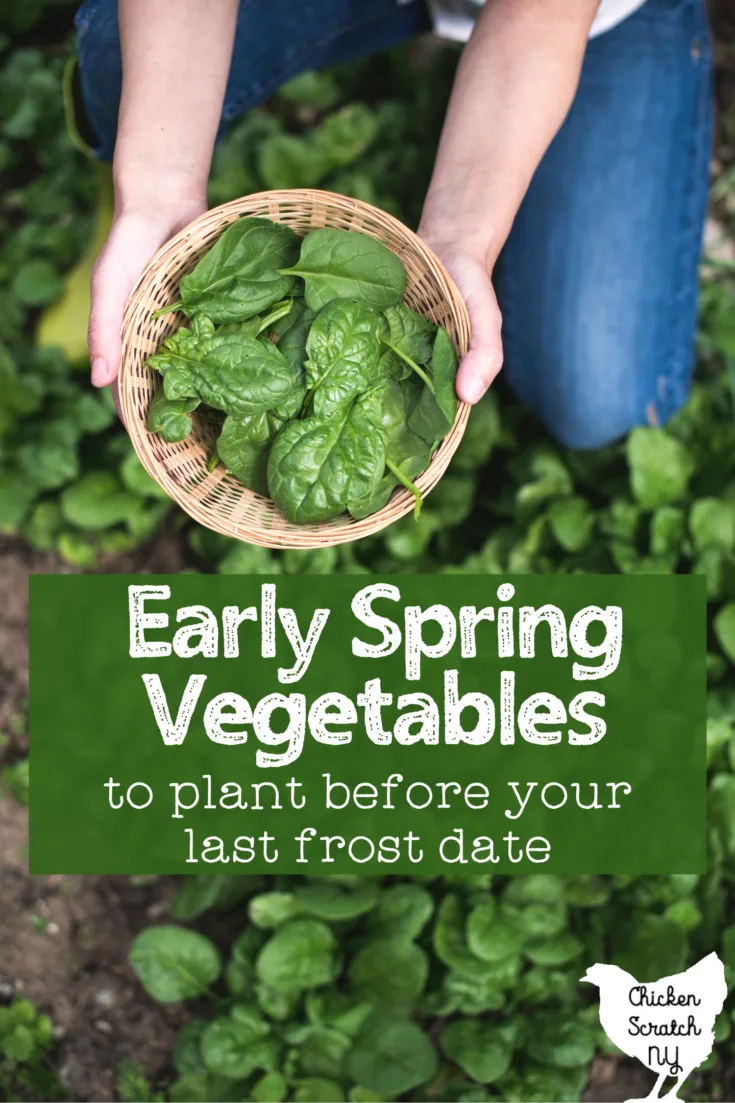Fresh garden peas are one of spring’s greatest joys and if you’re new to growing your own vegetables you might be surprised to see just how many types of peas you can grow in your garden!

Peas are part of the legume family along with beans, peanuts, and a bunch of stunning ornamentals that will add some color to your life. Plants in the legume or Fabaceae family are pretty magical, along with their edible and/or beautiful characteristics they can even improve your soil via nitrogen-fixing thanks to a symbiotic relationship with soil bacteria.
Learn more about Vegetable Families & Crop Rotation
Chances are garden magic isn’t exactly why you’re here, you’re probably here because you’re planning a garden and got overwhelmed in the pea section. I can’t blame you there, I’m a vegetable garden nerd and it can be a bit much for me too.
Today I’m going to break down all the different types of peas and hopefully, help you navigate the wide world of garden pea seeds and plants.
Shell Peas
When you think of peas do you cringe and think back to piles of mushy greenish orbs boiled almost to death? Well, those are shell peas that met an unfortunate end they didn’t deserve.
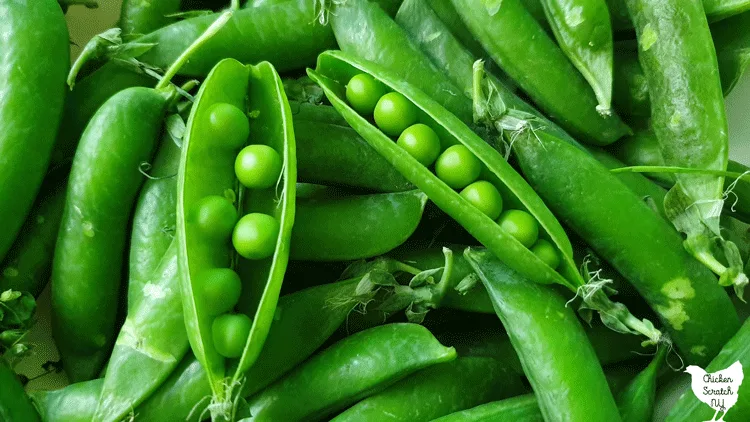
Shell peas are removed from the shell before being eaten. When picked young and eaten quickly they’re tender and sweet.
If you let them stand on the vines too long or pick them and let them sit, the sugars will turn into starch and you’ll lose that delicate flavor. I have lots of memories from my childhood of picking and eating my way through my grandparent’s pea patch in the garden, discarding shells along the way.
I don’t actually grow many shell peas anymore, I’m a pretty lazy gardener/cook, and picking and shelling peas is too much for me. Instead, I devote the space to my favorite sugar and snow peas.
If you want to try your hand at growing shell peas in your garden I recommend Wando Shell Peas, an heirloom variety from the 1940s, or Progress #9 Shell Peas if you’re looking for a bushier cultivar.
Progress #9 is my pick for 2022, more for my kids than me. Peas are a great garden crop for kids, the seeds are large and spacing isn’t a huge deal, not to mention they’re sweet and tasty and they grow pretty quickly.
Snap or Sugar Peas
Moving into the edible pod peas, sidenote: based on my childhood experience you can eat shell pea pods they’ll just be really chewy, our first stop is the sugar or snap or sugar snap peas.
These peas are grown for their thickened pods. You can cook them, add them raw to salads or just do as we do and eat at least 85% of your harvest fresh in the garden .6 seconds after picking.
I think they give you the best bang for your buck. You get a bigger harvest volume than with snow peas and basically none of the extra work with shelling peas.
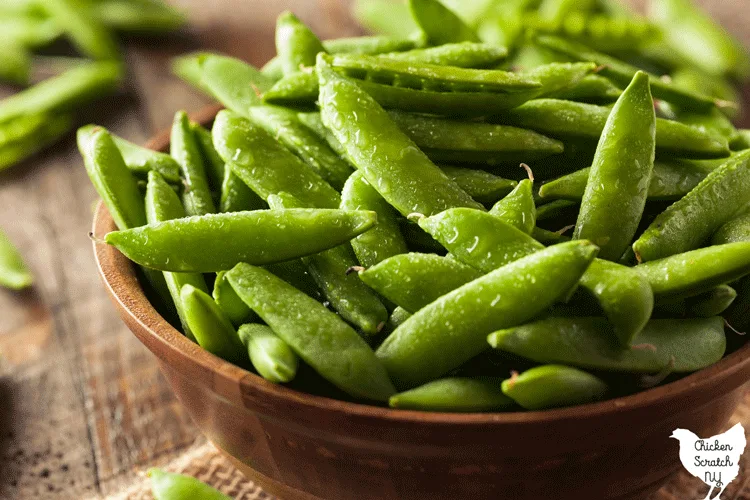
I usually grow Sugar Snap peas but this year I’m also adding Sugar Magnolia, a purple variety of sugar pea to my lineup. They’re both large plants, with vines up and over 8 feet but I’m never going to limit easy veggies that my kids will fight me for.
If you’re looking for some fun you can also grow Sugar Daddy snap peas, it’s a much shorter variety, just make sure to record your neighbor’s reaction when you loudly proclaim how good your sugar daddy is.
Snow Peas
When I was growing up we called Snow Peas “stir fry peas”, after all that was my mid-90s central New York introduction to the deliciously crisp and juicy flat pea pods.
Like with sugar peas the entire pod is edible. However, snow peas lack the thick walls that give the sugar peas their body and weight.
Instead, the large pods are very flat, so thin you can almost see through them, and should be harvested when the peas inside are tiny.
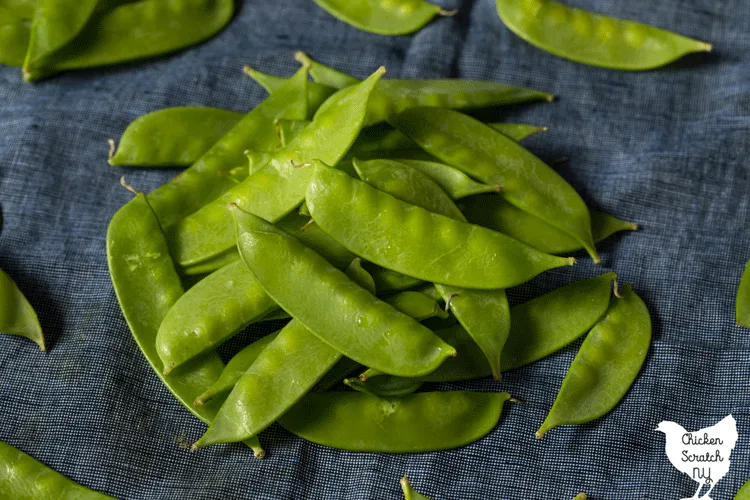
I have been growing Oregon Sugar Pod Snow Peas for the last few years and I’ve always been happy with them. The large flat pods stay crisp and they keep producing until our inevitable surface of the sun moment that hits in early summer.
In my experience, the plants get taller than the package claims but I’m not about to complain about larger plants and higher yields. However, if you have a smaller garden or less space for peas you might want to try something else or just pinch your plants for bushier growth.
Field Peas
This is my curveball, field peas aren’t usually grown to be eaten. Instead, they’re planted as livestock feed or as a cover crop to improve the soil.
Read more about Cover Crops
Even though those two reasons are more than enough to earn them a place in the garden, field peas are the gift that keeps giving and they also offer up delicious crunchy pea shoots. Unlike the rest of the options on this list, you aren’t eating peas at all, instead, you’re eating the tender, early growth.
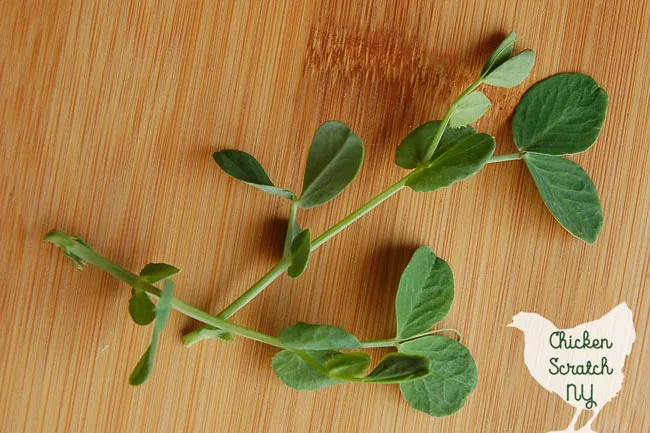
The shoots, tendrils, and leaves are all edible and have a sweet pea flavor. I prefer to grow mine indoors in trays under my grow lights but you can grow them outside either in the ground or in a container.
You can use any type of garden pea for pea shoots but since you’ll be planting them pretty densely you’ll save money buying larger bulk garden pea packages or getting pea seeds intended for shoots, just make sure they aren’t treated with anything.
Check out my Vegetable Gardening page for more information or start here:

